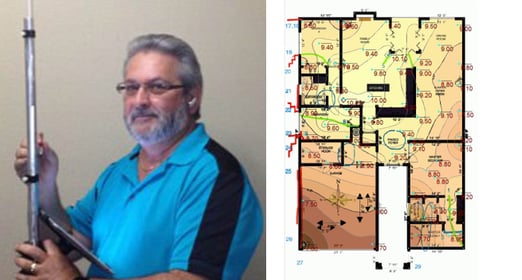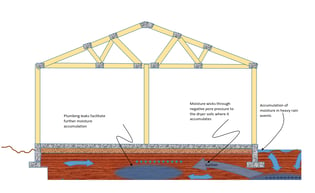 It seems that everyone seems to have a different opinion of how to conduct a foundation investigation. I have been a member of two different foundation repair networks (both Ram Jack and Foundation Supportworks) and a longtime member of the National Foundation Repair Association (http://www.foundationrepair.org/) . In addition I often get to see the work done by my competitors in terms of an investigation. It is amazing how much difference there is.
It seems that everyone seems to have a different opinion of how to conduct a foundation investigation. I have been a member of two different foundation repair networks (both Ram Jack and Foundation Supportworks) and a longtime member of the National Foundation Repair Association (http://www.foundationrepair.org/) . In addition I often get to see the work done by my competitors in terms of an investigation. It is amazing how much difference there is.
For some reason the foundation repair industry has not adopted a consensus methodology. Some contractors walk around the house with a 4 foot level and make notes on a floor plan. Some read floor elevations with a water or ZIP level. Some walk around take pictures and make notes on a floor plan. I have even seen some contractors merely walk around and opine on cracks. For example saying something like ”this crack is a normal settlement crack”. As if there is some definition of what a “normal settlement crack” is or is not. On one occasion one contractor…. for their investigation that they charged money, for simply presented a quote for soil borings from a third party geotechnical engineer.
Because of this widely differing methodology you might imagine there are a wide variety of results. How is a person supposed to know which one is right? The first question to ask is “is this investigation following any consensus industry guidelines or protocols?” I know of only two consensus standards for foundation investigations. And they are remarkably similar.
The first is the foundation performance Association (FPA) (http://www.foundationperformance.org/) , and the second is the Texas chapter of the ASCE (American Society of civil engineers) (http://www.texasce.org/) . Both the FPA and the Texas ASCE break investigations into three categories, A, B, and C and they are summarized as follows. For a full detailed list follow the links to their websites.
A. A simple walk around and observation of history and easily discernible signs of stress. This is usually done as an initial investigation to see if a more thorough investigation is warranted.
B.This investigation should include a floor plan drawn up, floor level readings, photographs, history, aerial photos, deflection analysis, and a damage map on the floor plan.
C. This investigation includes soil borings, lab analysis, a more in-depth historical aerial photo analysis.
Level A is usually just used to determine if an investigation is warranted. Sometimes in real estate transactions it can be used to simply see if a house has any issues or not. Level B is the bulk of the investigations and is commonly used to determine what repairs are needed on a house with foundation movement. Level C is usually performed when there are lawsuits or insurance claims.
So a good question to ask anyone who is investigating your foundation is what level of investigation are you performing? Or are there any standards being followed at all? If so what are they and what consensus do they represent. Single source supplier instructions don’t really count. Acting really confident and puffing up your experience does not really count either.






